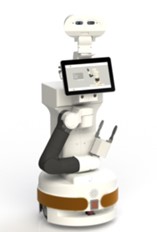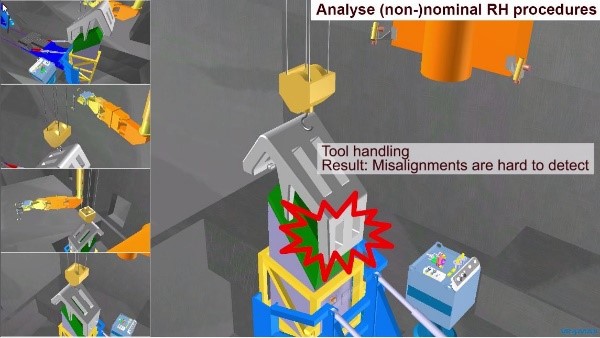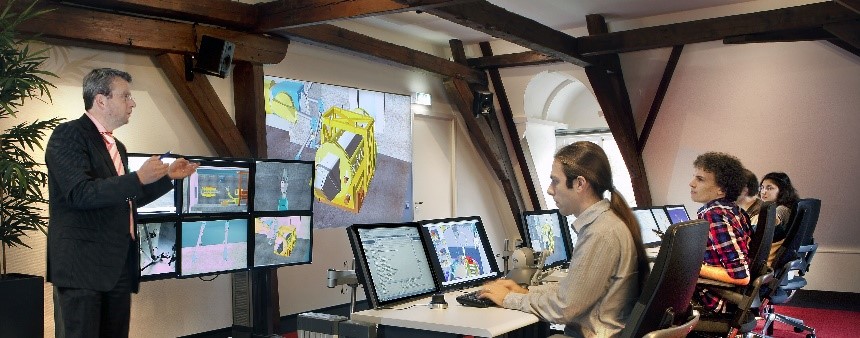The Remote Handling Systems of ITER will be designed for the maintenance of plasma facing components of the plasma fusion reactor. During operation, those components will get activated and contaminated with radioactive and toxic materials. Remote Handling (RH) maintenance is performed by master-slave telemanipulation techniques, therefore, proper visual and haptic feedback through cameras and manipulator arms are important factors in achieving accurate control over the process. However, full scale hardware mock-ups are expensive to build and might rapidly become outdated due to design changes. In cooperation with the FOM Institute DIFFER, Heemskerk Innovative Technology (HIT) has developed an Interactive Task Simulator and a multi-operator RH Control station, in which maintenance procedures RH can be developed, tested, and validated in a Virtual Reality context.
Figure 1. Simulating remote maintenance of components in the Remote Handling Study Center
ROSE: A robust and safe remote-control system for elderly people assistance
As people worldwide are living longer, many countries face the challenge of providing care to an aging and growing population. By considering teleoperation, the company have noticed a major need in the healthcare sector and decided to transpose their RH knowledge to it. The remote handling system developed for the maintenance of ITER has yielded to Remotely Operated SErvice Robot (ROSE) prototype providing home care support for elderly and non-autonomous people. Its involvement in the fusion domain has enabled HIT to develop a tele-operation mode, controlling the robot using visual and haptic feedback through the internet. Additionally, developing their Artificial Intelligence (AI) techniques for this new application has encouraged them to build new skills. The algorithm will allow the robot to learn incrementally new tasks with the remote operator’s help, therefore, increasing the capabilities and functional value of the robot. This novel feature is named Learning from Demonstration using Teleoperation (LfTD).

The remote operator will assist the robot when its autonomy falls short, ensuring successful and safe task execution. In addition, each successful task completion is at the same time an input to teach the robot this new task, while ensuring safety. Robot Rose aims to improve the quality of care by reducing care workers workload, improving patients’ independence, enabling communications between patients and their family or healthcare professionals.
Many small regional hospitals and care centres are in danger of closing because of the lack of nursing personnel. People in those regions suffer from poor care services, and COVID-19 pandemic has further inflated this problem. Now even larger care organizations are struggling with staff shortages. ROSE will meet the urgent demand for more personnel and help care organizations maintain their quality services.
Working for ITER has led to an international exposure and a competitive spin-off creation
Its involvement in ITER has given the company an exposure to an international community and has strengthened its competitiveness. The company has managed to gain contracts from international clients which would have not been possible otherwise. Through extensive collaboration with the best scientists in the world in the field of remote handling, robotics, mechatronics and haptics, HIT has strengthened the Dutch scientific knowledge.
The spin-out centre, Remote Handling Study Centre (RHSC), created for ITER enabled HIT to broaden its scope of application to include industrial maintenance and health care. Indeed, the biggest added value of its involvement in ITER has been the acquisition of knowledge in teleoperation systems. HIT has become highly competitive on this technology and identified the need in the healthcare sector, before adapting their technology to fill it.
The contracts established between HIT and F4E for ITER allowed the creation of a spin-off dedicated to ROSE which is marketed under a Robot as a Service (RaaS) model through care organizations and is expected to yield to a growth in revenue and create at least 33 additional highly qualified jobs by 2027.

